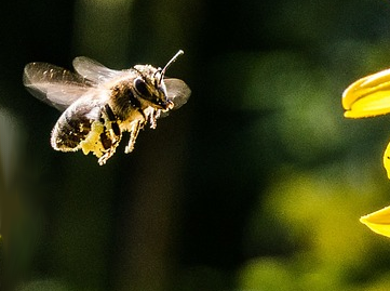Rebecca Tyson, University of British Columbia (UBC), Vancouver, BC, Canada, and colleagues developed a mathematical model of pollen dispersal by bees, based on field experiments, to estimate how far GM pollen travels, so that unintentional cross-pollination of genetically modified (GM) material to non-GM crops can be minimized.
The simplest way to minimize cross-fertilization between crops is to separate them. So far, the isolation distances have been somewhat randomly determined. For example, GM and non-GM conventional maize crops can be 25 m apart in The Netherlands while they must be separated by at least 600 m in Luxembourg. Previous estimates have been based on two standard models, which either overestimate (Brownian motion) or underestimate (Lévy flights) pollen movement. The gap between these two distances makes prediction difficult.
The team proposes a mechanistic model for pollen dispersal in which the bees perform truncated Lévy flights. This leads to a fractional-order diffusion model for pollen that can be tuned to model motion ranging from pure Brownian to pure Lévy. According to the researchers, their study suggests that separation distances of several hundred meters is unnecessarily large, but separation by 40 meters is not sufficient.
- A Lévy-flight diffusion model to predict transgenic pollen dispersal,
V. Vallaeys, R. C. Tyson, W. D. Lane, E. Deleersnijder, E. Hanert,
J. Royal Soc. Interf. 2016, 14(126).
DOI: 10.1098/rsif.2016.0889



